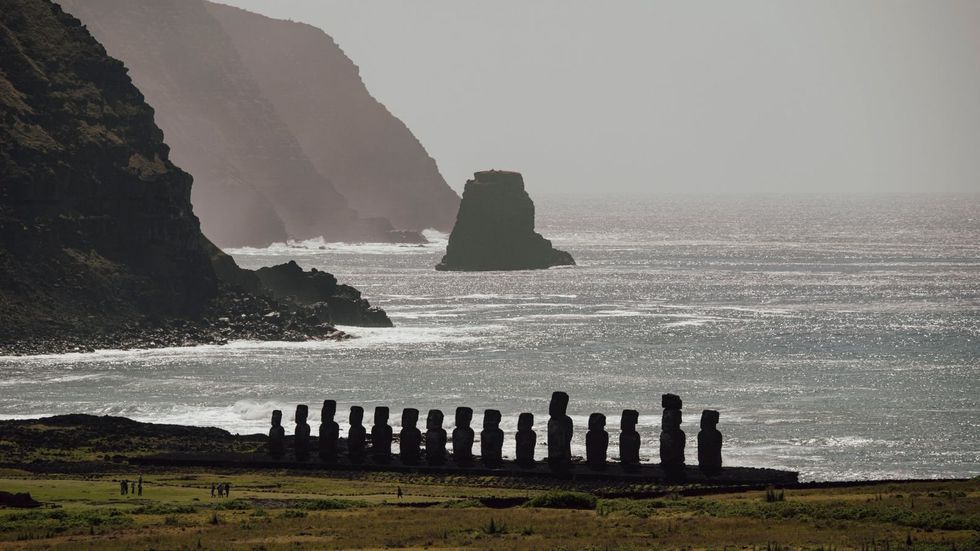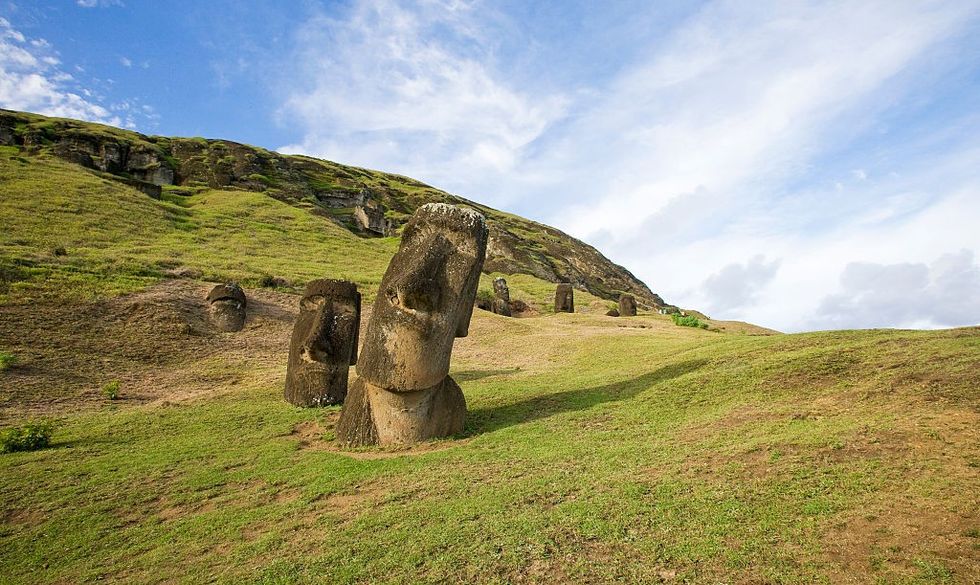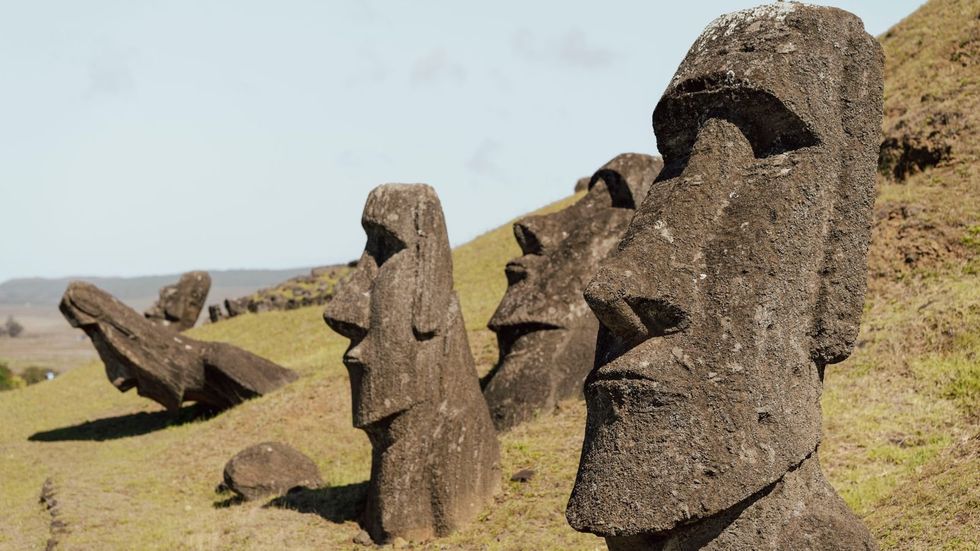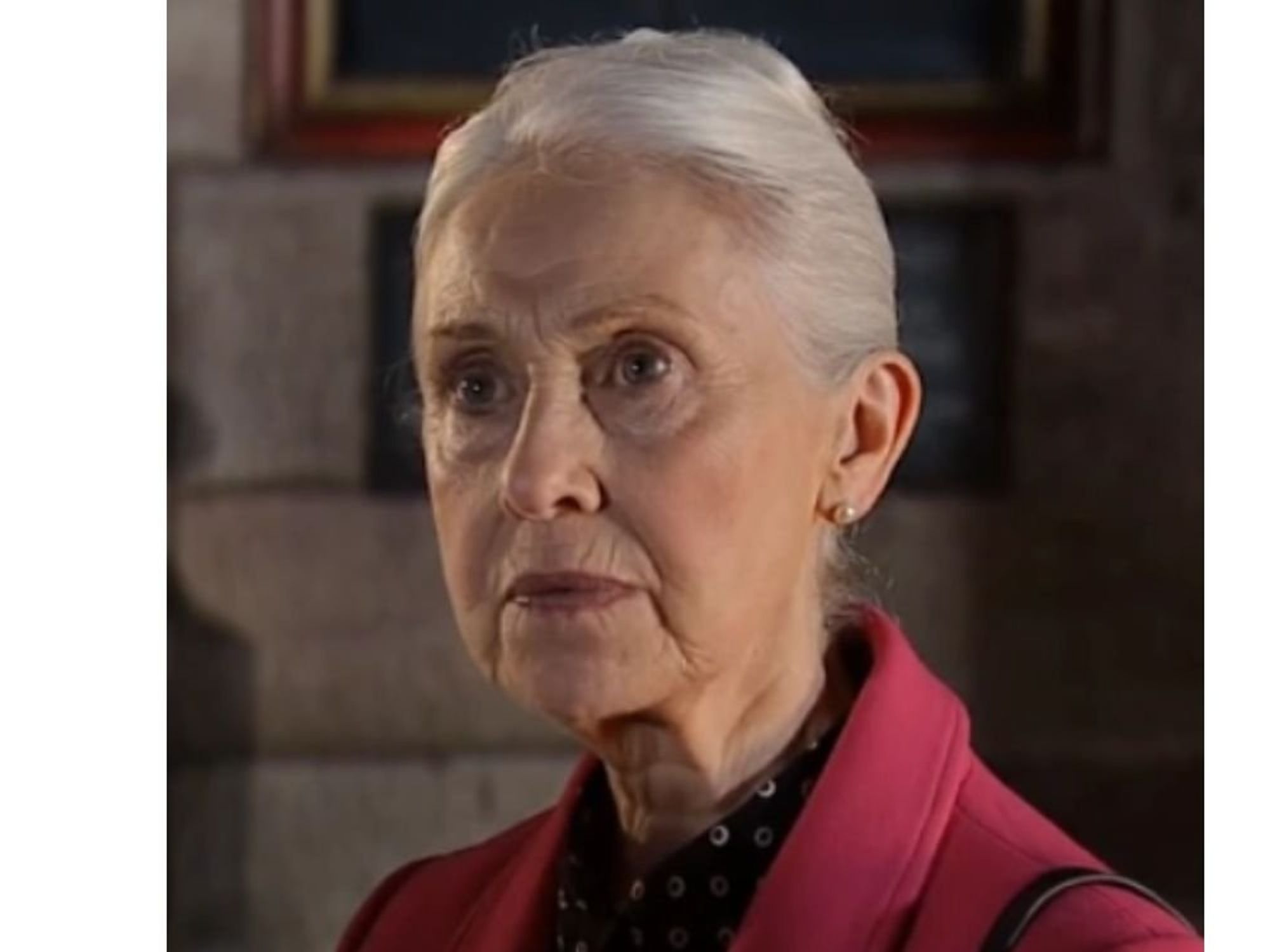Easter Island mystery is solved as scientists reveal exactly who built iconic towering stone heads

Researchers said the Pacific island was like 'archaeological Disneyland'
Don't Miss
Most Read
The mystery of exactly who built Easter Island's towering stone heads may finally have been solved.
Scientists have discovered that the famous statues, or Moai, were not erected by a massive organised workforce - contrary to popular belief.
Researchers from Binghamton University analysed a detailed 3D model of the Rano Raraku quarry where the monuments were produced.
The digital reconstruction, created from 22,000 drone photographs, revealed evidence that contradicts long-held beliefs about how these 12 to 80-tonne sculptures came to exist.
The hulking heads were, in fact, created by small family groups, the researchers found.
"We see separate workshops that really align to different clan groups that are working intensively in their specific areas," said Professor Carl Lipo, who led the research team.
Their findings appear in the journal PLoS One.
Archaeologists discovered 30 separate production areas in the quarry, each displaying distinctive carving methods and artistic approaches.

The mystery of exactly who built Easter Island's towering stone heads may finally have been solved
| GETTYIndividual clans operated these workshops, with as few as four sculptors needed to create each enormous figure.
"You can really see graphically from the construction that there's a series of statues being made here, another series of statues here and that they're lined up next to each other," Professor Lipo explained.
Different groups employed varying techniques - whilst most began by carving facial features before outlining the body, some extracted entire blocks first, and others worked horizontally into cliff faces.
Certain workshops even produced moai with distinctly feminine characteristics.
THE MYSTERY OF EASTER ISLAND - READ MORE:

PICTURED: Moai in Rano Raraku in the Rapa Nui National Park on Easter Island
|GETTY
The research indicates that the quarry wasn't governed by any central power structure, with family groups instead arranging access amongst themselves.
Natural rock formations served as boundaries between workshops rather than imposed territorial divisions.
"The quarry is like the archaeological Disneyland," Prof Lipo added, describing the site as a valuable source of cultural information that had been surprisingly under-documented until now.
The 3D mapping technology allowed researchers to examine previously inaccessible areas of the quarry.
"You can see things that you couldn't actually see on the ground. You can see tops and sides and all kinds of areas that just would never be able to walk to," Prof Lipo said.

'The quarry is like the archaeological Disneyland,' Prof Lipo said
| GETTYRecent experiments demonstrate that transporting the massive sculptures required far fewer people than experts previously estimated.
Anthropologists discovered that the Easter Islanders likely moved the statues by attaching ropes to both sides and creating a rocking motion to shuffle them forward.
"When we look at the ability for people to move giant statues, it doesn't take that many people to do it," Professor Lipo stated.
Tests using 3D modelling and practical trials showed that just 18 individuals could successfully "walk" a moai along specially constructed roads.
These 4.5-metre-wide pathways featured concave surfaces that helped stabilise the monuments during transport.
The technique proved so efficient that participants needed only one hand to maintain the rocking motion once it began.










